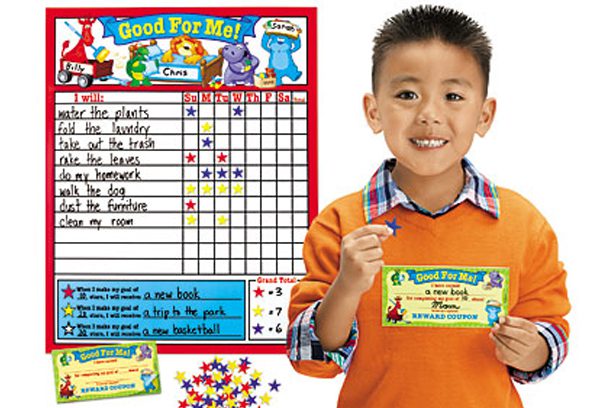
by admin | Jul 22, 2013 | Blog, Catherine's Picks

Rewarding kids for good behavior is a way to minimize negative behaviors and encourage more positive ones. I like this chart because you can write in the behaviors and what a child earns for the stars earned.
It is good to start with only a few behaviors for younger kids. For older children, you can write 6-8 behaviors. Also, try one behavior you know your child can do, one that is a little of a reach but he/she can do, and one that he/she hasn’t done yet, but you would like to see. In the beginning it is good for the child to get a few stars easily. It helps get them invested in the system. Lastly, behaviors on the chart must be positive. Avoid giving a star for not hitting brother, for not spitting food out, for not making a mess. Instead reward for catching child being nice to brother, eating food with good manners, and for cleaning up.
Some good examples of behavior for the chart would be: Put clothes in laundry basket, hang up book bag, good table manners, listens the first time asked, does a good job on homework, and helps a parent with a chore. Choose items that you feel you are always nagging your child to do.

by admin | Jul 17, 2013 | Catherine's Picks
I recently wrote a short blog for the Wall Street Journal about how to talk to your kids about the George Zimmerman verdict. Here is what I had to say
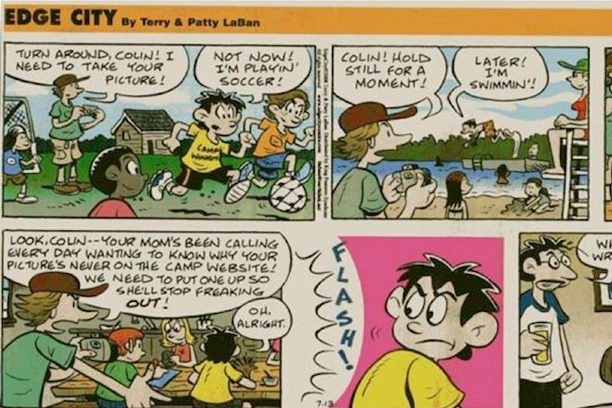
by admin | Jul 5, 2013 | Catherine's Picks, Uncategorized
Sending my daughter off to sleep-away camp was something I never questioned. It is what I did, and my sisters, and all of my cousins. It was the best time in my year and I learned half of what I know from my summers away. I can start a fire, put up a tent, canoe, sail, water ski, be independent, be a friend, a leader, a follower, and push myself to do something embarrassing. Most important, I learned to deal with people who I may not always like. Our head counselor, Helene Lebowitz, used to say “Girls, you don’t have to like each other, but you have to get along.” Helene taught me one of my most valuable lessons. I never forgot her or the lesson. I wanted my kids to have the same experience.
Basking in the glowing memories of my camp experience, it never occurred to me that I would be at home suffering and desperately missing my daughter. I wonder if she is getting any sleep. Did she make friends? Is she eating anything healthy? Did she find her toothbrush? Is she changing out of her bathing suit when it’s wet? Is she using a clean towel for the shower and not the yucky one from the lake? Did she get up on skies? What is she doing right now? How about now? What about now? You get the point.
To make my obsession even more voracious, the camps post photos of the kids. Parents pour over these photos waiting for a glimpse of a happy camper. This cartoon really makes me laugh because it is so true. Anyone who has sent their kids off to sleep-away camp can relate. Enjoy and try to laugh.
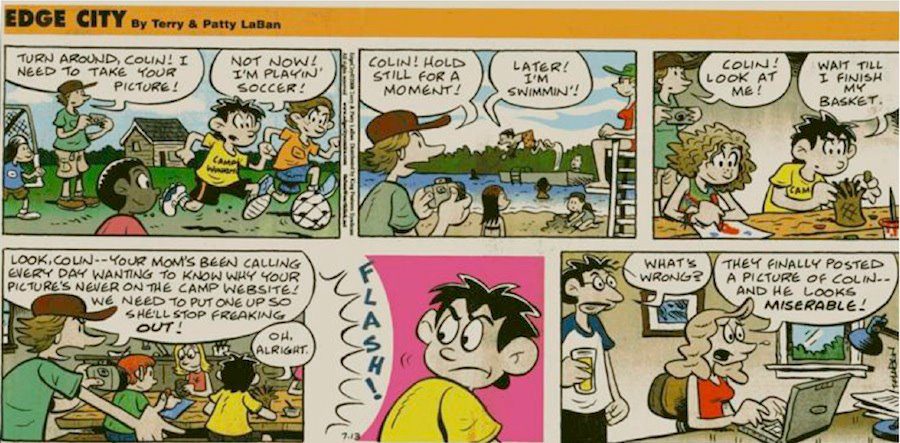
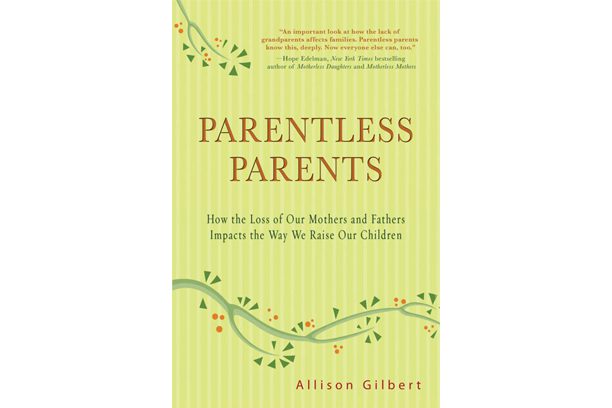
by admin | Jun 20, 2013 | Catherine's Picks
Parents who have lost both of their parents have a quiet tough road. No parent to ask “Was I like this as a child?” or to ask for advice about a current situation. No parent to ask about medical history or to call for babysitting. Parentless Parents:How the Loss of Our Mothers and Fathers Impacts the Way We Raise Our Children is an incredible resource for parents who have lost their parents or for spouses, in-laws or therapists. It is well researched and very readable.
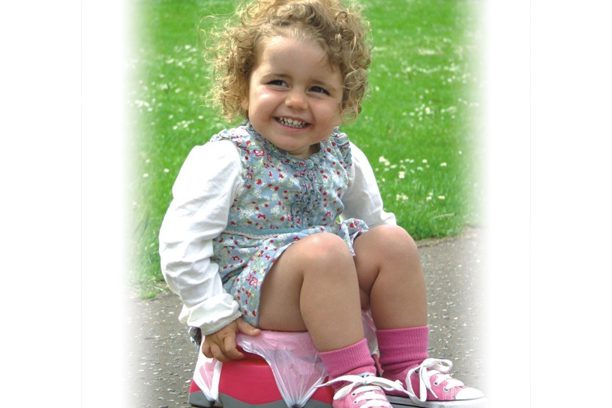
by admin | May 29, 2013 | Catherine's Picks
The Kalencom 2-in-1 Potette Plus is a potty training purchase you cannot do without. I promise this is vital. It is so helpful you may feel a twinge of jealousy that you can’t use it.

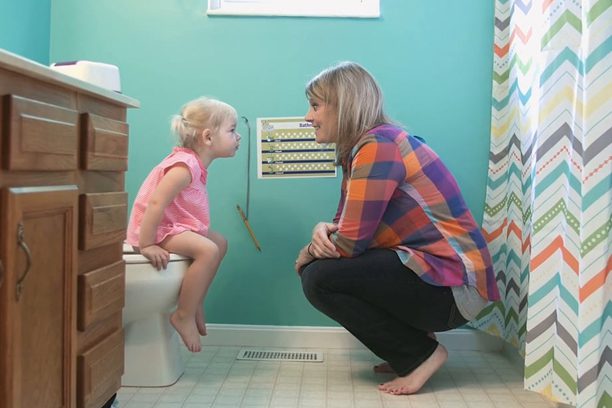
by admin | May 29, 2013 | Catherine's Picks
Family Coach Potty Training Philosophy
Do not feel pressure to begin ahead of schedule. There is a lot of outside pressure to have your child trained. Starting training too early just prolongs the process and adds to everyone’s frustration. It is better to wait until you are ready and you see clear signs that your child is ready.
When is your child ready?
- When he/she is verbal enough to tell he/she has to go potty
- The interval between diaper changes is expanding with some periods of dry diapers. Children ready to be trained should be able to have a dry diaper for 2 hours. Diaper might be dry after naps.
- Child has a somewhat predictable schedule for bowel movements.
- Child can follow simple instructions.
- Child is not going through a particularly difficult stage in toddlerhood
- Child can sit quietly for 3-5 minutes
- Is showing an interest in the potty
- You can sometimes tell when your child is making a bowel movement
- Child can pull down pants by self









